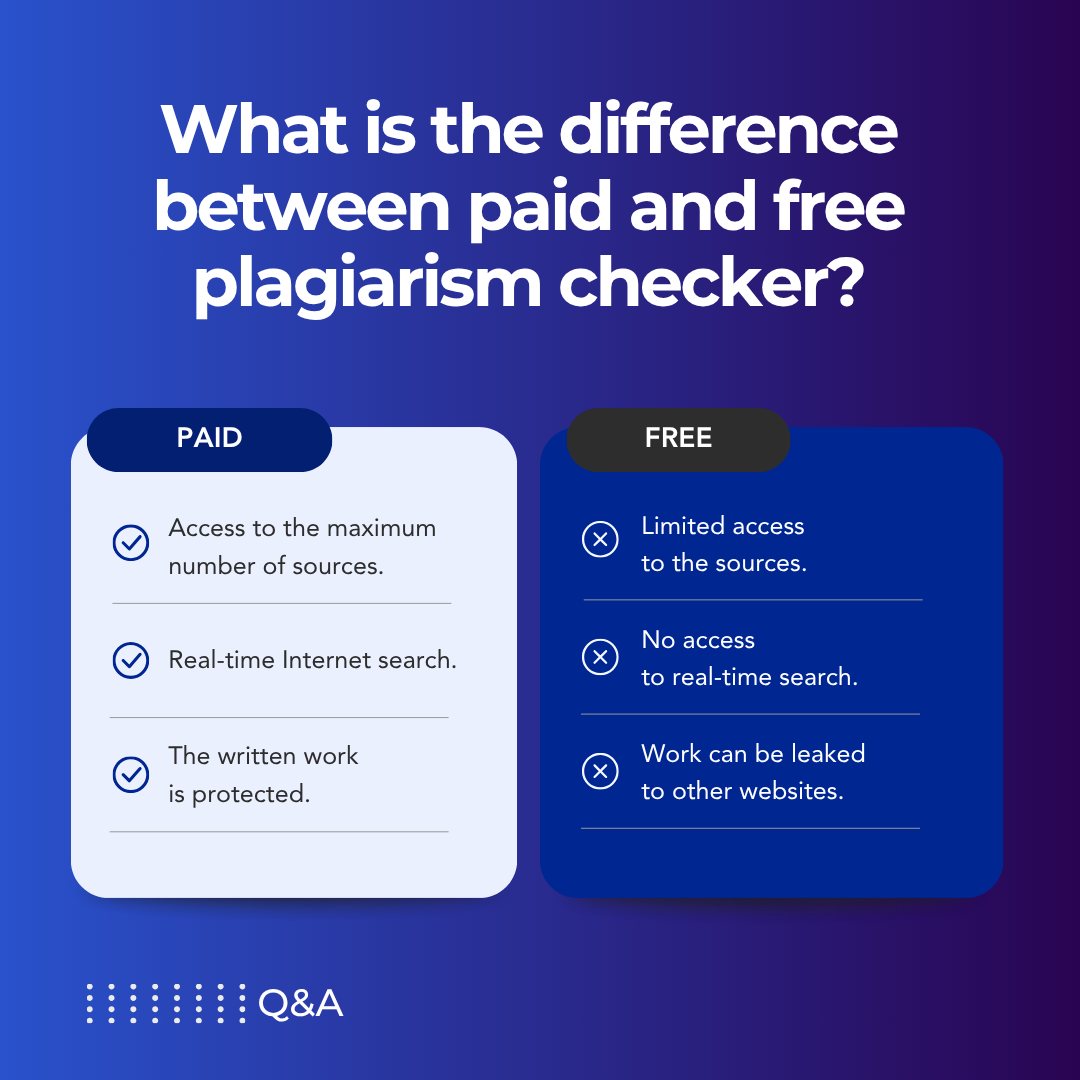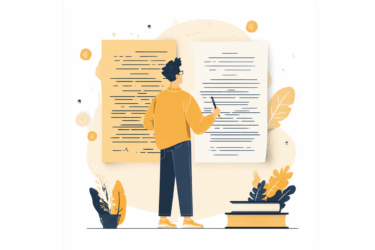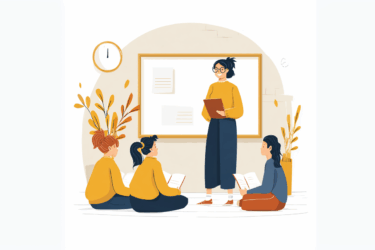If education can become a cure for the problems of modern society, we need really good doctors. It means we should address the reasons for possible concerns and misbehavior rather than deal with the misdoings themselves, just like good medics would treat the reasons for patients’ suffering rather than get rid of the symptoms only.
So, when the Chat GPT plagiarism checker or similarity detector once again shows that the student has cheated on the assignment, aside from pressing charges, we can think of ways to address the bigger issue, “Why do people plagiarize?”
Why people plagiarize & how to prevent plagiarism
Let’s put aside the situation when the person plagiarizes intentionally, fully realizing the severity of this offense and still aiming to break all the academic and ethical rules. While such cases do happen, writers’ plagiarism often comes from a lack of awareness, confidence, and skills.
Lack of awareness
Students may plagiarize because they simply see nothing wrong with it or are not fully aware of the definition of plagiarism. They may think something like, “Okay, I don’t fully copy someone’s work; I just take some extracts here and there,” or they refer to one tiny piece without realizing that it requires accurate citation.
Solution: Some institutions provide Writing Ethics courses, and it sounds like a relevant idea that can elevate students’ awareness of academic integrity and also help them acquire much-needed ethical guidelines for future work.
Even without a dedicated course, the instructors can allocate some time to explaining the essence and the types of plagiarism, teaching to cite sources, educating on the importance of originality, and advising on some strategies for crafting an authentic paper.
Lack of confidence
Sometimes, people just don’t feel free to speak their truth and prefer to hide behind the respectful enough-to-be-published and editor-approved works.
Solution: As the teacher is hardly a psychotherapist fully authorized to address the self-expression issues, there are some tools that can help promote independent thinking and encourage creativity. It may be crucial for the students to feel genuine interest and respect towards their opinion, as well as get clear instructions that their task is to reflect on the issue/do original research/share their perspective rather than retell the material.
Lack of time
When the deadlines are pressing, students may reckon the only way to complete the paper is to copy someone’s assignment or compile their work from other papers. This reason is no justification for academic cheating; however, it can indicate the need to pinpoint the type of task, help to break the work into steps with halfway deadlines, and talk about proper time management.
Solution: Ensure you give enough time for the creative assignments that need research and reflection. Ensure as well that the students estimate the time the task will require from them, emphasizing the importance of preparation instead of procrastinating till the deadline night. You can also suggest a plan dividing the project into steps with a deadline for each of them.
Lack of skills
Some students and writers realize all the drastic repercussions of plagiarism but just do not know how to avoid it, especially when it comes to evidence-based and source-grounded tasks.
Solution: Educating students on how to work with the sources and paraphrase properly, combined with lots of practice, may help them master the art of creating their writing and finding their authentic voice. Tools like Citation Generator and Grammar Checker can be significant support on the way, allowing students to progress and learn while they write.
Lack of experience with AI
As AI tools are relatively new, and even educators are still figuring out their way around Chat GPT and similar bots, it is no wonder that students may misuse the technology. It goes without saying that AI-generated assignments can’t be considered honest and authentic, but also they are often plagiarized! AI doesn’t create original content, and the reason for so many matches with online resources may be the text wasn’t even written by the student.
Solution: Adopting clear guidelines regarding the allowance of AI technologies in class can be an essential step. That being said, a strict ban on AI tools doesn’t seem to be a perspective idea, as students need to learn to adopt and implement these instruments ethically. Instead, some tips and tricks on using AI to enhance learning and writing without stepping aside academic integrity may be profoundly helpful.
Lack of tools
Even knowing all the plagiarism pitfalls, students sometimes feel underequipped to deal with them appropriately. When composing an original paper, the writer may still face unintentional plagiarism, failing to deliver the desired result, and getting poor grades without the intention to cheat. To withstand such challenges, students need to get tools they can rely on to check their writing before submission.
Solution: Plagiarism and AI checking tools not only save the teachers time and effort. They can also help students to feel more confident. By checking the work before submitting it, they can learn from their mistakes, edit the writing, and perfect their skills even before the instructor gives feedback.

Citing the sources as a way to prevent plagiarism
Citation is a way to show that your writing uses some other works. It may contain direct quotes, paraphrased ideas, or just inspiration from some concepts you have met elsewhere. What is important is that you acknowledge the influence and pay tribute to the original authors.
The citation has to maintain specific rules; sometimes, a violation of them is considered plagiarism, even if you formally reference the source. Formatting standards are especially imperative in academic and scientific domains, so educating oneself on citation principles is vital.
How to cite
The citation should contain information about the source you took the information from. It is worth mentioning that one can quote and reference not only books, journals, or online publications. Data taken from TV programs, interviews, films, patents, bills, and other documents should also be attributed.
The citation should include
- the title of the source;
- the author;
- the page or pages containing the material you are referring to;
- the date your copy was published;
- the name and location of the publisher / the website URL.
Citation styles
First and foremost, one should adhere to the professor’s recommendations or the journal’s standards for applying the paper. However, we can outline the citation styles commonly used in education and research.
Any citation style requires including basic information about the source; the difference is in the format and arrangement. Moreover, most of the styles expect one to include a short form in-text citation in the relevant part of the writing and provide complete information about the source in the list after the main part of the paper.
APA (American Psychological Association) is used for papers in sciences and education. Order: Author Year Title Publisher
Example: Backman, F. (2019). Anxious People (1st ed.). Månpocket. – full citation
(Backman, 2019, pp. 7–5) – in-text citation
MLA (Modern Language Association) is used for liberal arts and humanities at the undergraduate level.
Order: Author Title Publisher Year
Example: Backman, Fredrik. Anxious People. 1st ed. Månpocket, 2019. – full citation
Fredrik Backman, Anxious People, vols., 1st ed. (Månpocket, 2019). – in-text citation
Chicago is used for business, history, fine arts, and humanities at the graduate level.
Order: Author Year Title Publisher
Example: Backman, Fredrik. 2019. Anxious People. 1st ed. Månpocket. – full citation
Backman, Anxious People. – in-text citation
Harvard (also called the author/date system) is used for humanities, natural and social studies.
Order: Author Year Title Publisher
Example: Backman, F. 2019. Anxious People. 1st ed. Månpocket. – full citation
(Backman 2019) – in-text citation
There can be insignificant differences in formatting within the style depending on the discipline and the particular educational institution. The guidelines and a citation generation tool can help to heed all the details without being overwhelmed by the rules – simply choose the required style, insert the source information, and copy the type of reference you need.
In-text citations
In-text citations refer to the source in the actual body of the paper, immediately following the notion one wants to cite. Most commonly, in-text citations include the author and the publication date, mentioned in parentheses (Backman, 2019, pp. 7–5). The full form of the citation will be provided in the reference list placed after the main text.
Some citation styles use in-text superscript or bracketed numbers relevant to the corresponding attribution in the reference list. This method is typically applied in the AMA (American Medical Association) style for medical papers.
Other citing styles may require placing an explanation in footnotes or endnotes. This way of referencing is typical for the Chicago style. However, it can also be met in MLA and APA papers, mostly for giving copyright or content details rather than attribution.
List of references
Papers containing footnotes may not require a detailed bibliography list. Most of the papers, however, do include a list of the used sources:
- it is called List of References in APA and Harvard styles,
- Works Cited in MLA,
- and Bibliography in Chicago style.
One should also note that the List of References includes data on all the sources cited in the work. Meanwhile, the Bibliography contains everything that influenced the author, so one should mention background reading and sources of inspiration, even when they are not quoted or referred to in the text.
Typically, the sources are listed in alphabetical order. However, it may vary according to the style along with the formatting details like italics, capitalization, and punctuation marks.
Suppose one applies a numerical citation style using the numbers in-text. In that case, the reference list is typically ordered according to the appearance of the notions in the paper so that the reader will find the attribution under the number mentioned in the text.
Latin terms in citing
There are some terms of Latin origin typically used in citing the sources.
- “Ibid.” – is short for “ibidem,” which means “in the same place.” Used for indication of the repetitive citing of the same text. For example, we want to refer to the different pages of the same book: 1. Backman, F. (2019). Anxious People (1st ed.). Månpocket, p. 4-9. 2. Ibid., p. 11.
- et al. – is short for “et alia,” which means “and others.” Stands for the list of authors or contributors when there are too many of them to mention, typically applied for more than two authors in APA and more than four contributors in Chicago style. For example, multiple authors’ Oxford Textbook of Medicine can be attributed (Firth et al., 2020).
In the footnotes, instead of “ibid.” one should use “Loc. Cit.” or “Op. Cit.”
“Loc. Cit.” – “Loco citato,” or “in the place cited,” applies when we refer to the same place in the same work as the previous citation;
“Op. Cit.” – “Opere citato,” or “in the work cited,” applies when we refer to a different part of the work from the previous citation.
Why should one cite the sources?
- Attribution makes your work more credible, proving that you have studied some sources and consulted solid data.
- Citation allows your audience to get some background reading, dive deeper into the topic, or check your sources to form their own opinion regarding the issue.
- Acknowledging your sources, you thank them for their work and promote healthy collaboration and honesty.
- Proper referencing saves your reputation and ensures you avoid copyright-related problems.
PlagiarismCheck.org advocates honest communication between teachers and students. With our tools, educators can check plagiarism and AI writing, motivating students to develop original thinking. At the same time, the learners boost their skills and improve their writing with every assignment. Join us for free now!






